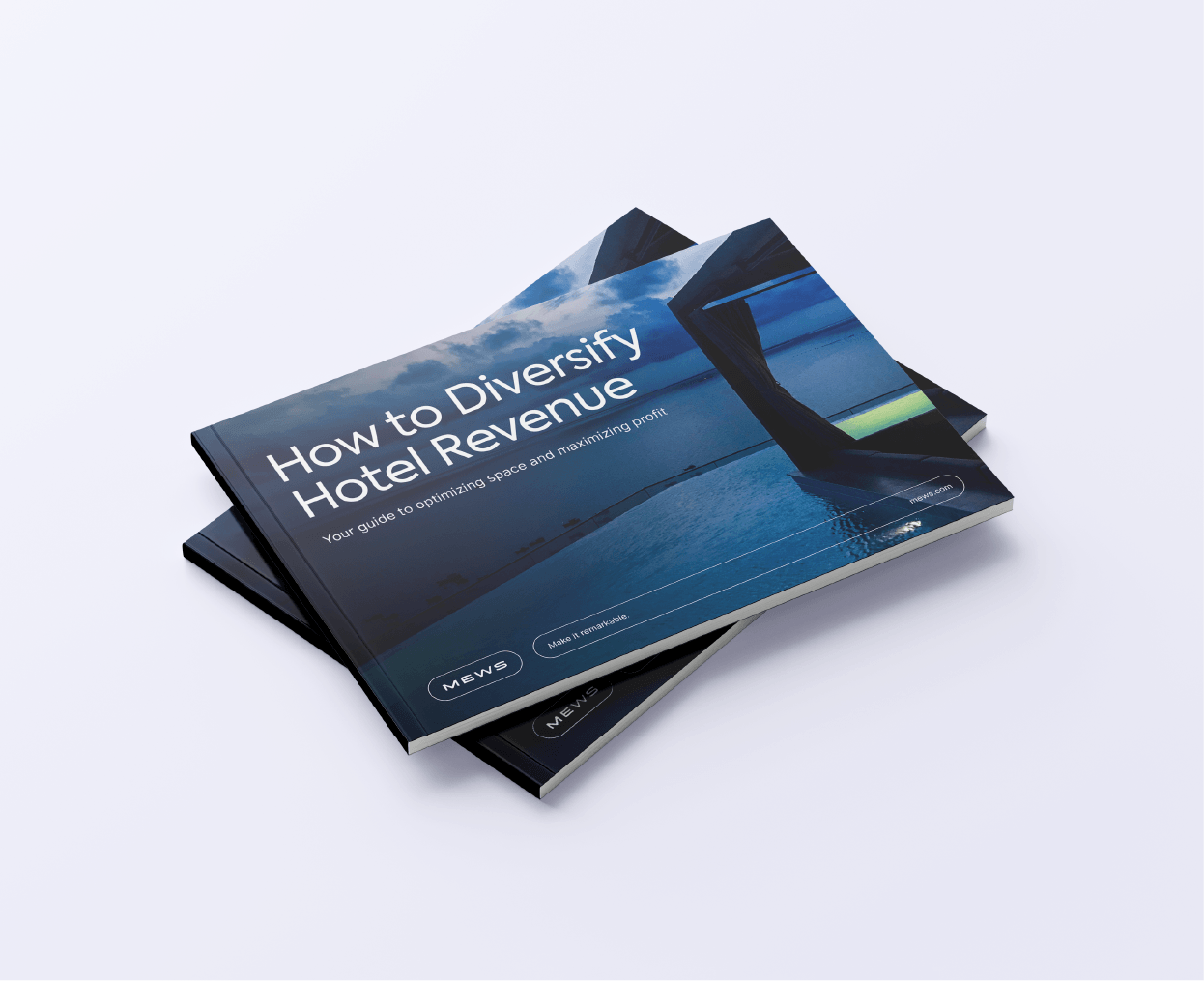What is dynamic pricing in hotels?
We’re all likely familiar with algorithms now, as many of the tools we use daily depend on them. Type anything into Google, and a complex system of data retrieval kicks into action to deliver the best possible results for your query. Scroll through your Instagram feed, and the results you see are calculated by an infamous algorithm that social media experts are always trying to outsmart.
Nowadays, hotels can also use algorithms that analyze data fluctuations to calculate prices in real time, automating revenue management through dynamic pricing.
This strategy considers factors that affect market demand, such as seasonality, competitor pricing, current occupancy, consumer demand, and other external influences. With this information, revenue managers can adjust room availability and adapt pricing strategies using a rate management system, allowing them to understand trends and implement rates that aim to boost sales and profitability.
How revenue management systems can work in your favor
Using a PMS like Mews with API integration makes connecting to various revenue management tools a breeze. This means you can make smarter decisions about how to price your rooms.
Revenue managers can monitor demand and room availability to adjust prices as needed. For instance, during periods of low demand, hotels can offer lower prices, while increasing prices as demand rises.
Decisions can be based on booking forecasts generated by the algorithm, which sets minimum amounts until a specific time of day. If bookings exceed the estimates, prices can be adjusted for future bookings based on demand, whether the strategy involves increasing or decreasing prices.

How does dynamic pricing work?
Dynamic pricing allows hotels to optimize revenue by adjusting rates in response to market changes and demand fluctuations. This is achieved through automation, technology, yield management and the right revenue management tools. By analyzing data such as booking trends, customer behavior, competitor rates and even weather conditions, hotels can forecast demand and identify patterns from past periods.
With the power of machine learning and AI, your revenue management system can analyze this historical data to better predict future demand, enabling you to adjust prices accordingly. Properly managing room inventory alongside dynamic pricing is also crucial to optimize rates and maximize total revenue.
What are the differences between dynamic and static rates?
Dynamic pricing adjusts rates based on demand, allowing hotels to capitalize on high-demand periods by raising prices. In contrast, static rates remain unchanged, regardless of market fluctuations. As a result, static pricing may lead to missed opportunities for maximizing revenue during peak times, as it doesn’t account for shifts in demand. While static prices offer consistency, dynamic rates can fluctuate even within a single day, adapting to real-time market conditions.
One advantage of static pricing is predictability, making it easier for both hotels and guests to plan ahead, knowing that rates will remain steady regardless of demand, seasonality, or market trends. Deciding whether static or dynamic pricing is right for your hotel depends on various factors, including market conditions, your business model, target customer profile, operational costs, location, and competitor pricing.
What are the benefits of dynamic pricing in hotels?
Dynamic pricing has many benefits, which we will explore in further detail below. This revenue management strategy can boost sales, maximize profits and provide insights into customer behavior. Let’s look at each benefit in more detail.
Boost sales and maximize profits
The primary aim of revenue managers is to ensure that rooms are sold at the best possible price, minimizing the likelihood of vacancies and maximizing revenue. By adjusting rates based on market demand, hotels can increase sales during low-demand periods with more competitive pricing, reducing the risk of unsold rooms.
Understanding market trends allows you to set room rates that align with or slightly undercut the market, encouraging potential customers to choose your hotel over competitors. Higher occupancy rates naturally lead to maximized profits.
Prices reflect demand and create higher level of demand
Pricing that accurately reflects market trends reassures potential customers. From their perspective, consistent pricing among hotels during a high-demand period is expected, while a dramatically lower rate can raise red flags. However, when your rates move in tandem with market trends, they appear more trustworthy.
For price-sensitive customers, a well-timed price drop can be the deciding factor that prompts them to book. Using revenue management software, hoteliers can forecast demand by considering factors like seasonality, customer loyalty, and past booking behaviors. This enables you to adjust prices to match what customers are willing to pay, attracting new guests who might otherwise be deterred by higher rates.
Since demand fluctuates, dynamic pricing helps minimize revenue loss from unsold rooms. If a room remains available as the check-in date approaches, lowering the price can entice last-minute bookers, ensuring you capture as much revenue as possible for that day.
Understand customer behavior
Since dynamic prices adapt average room rates to meet customer behavior, you can also use this pricing system to better understand your guests. The algorithm can monitor different segments of your target audience, track their booking patterns, average stay lengths, and room preferences, helping you identify which segments of your hotel are most attractive. This insight allows you to see how customers are influenced by special occasions and seasonal peaks, so you can adjust your average room rates accordingly and increase occupancy.
Furthermore, with a dynamic hotel pricing strategy, you have the chance to attract other market segments that wouldn’t normally book with you by offering lower prices temporarily.

Different ways to use dynamic hotel pricing
Dynamic pricing can be a powerful tool for improving occupancy rates. For example, hotels can offer discounted rates on major OTAs to boost occupancy during specific periods. Another approach is adjusting prices based on seasonality. If there’s an important conference during the off-season, for instance, hotels can raise prices even if it’s typically a period where rates would be lower.
Hotels can also use dynamic pricing to respond to broader market conditions. In the event of a predicted storm or economic downturn, lowering prices can help maintain profitability despite the challenging environment. Additionally, dynamic pricing allows you to tailor rates to different guest segments’ booking patterns. If there’s a three-day weekend in the off-season, for example, you can adjust prices to capture as much revenue as possible, even during a traditionally slower period.
How can dynamic pricing improve your hotel revenue?
Now that you understand how dynamic pricing works and its benefits, let’s explore how it can directly boost your hotel revenue.
Dynamic pricing helps increase revenue by adjusting room rates to optimize occupancy. By closely monitoring market trends and comparing your prices with competitors, you can enhance your RevPAR (revenue per available room) by aligning your room rates with current market values.
One effective tactic is the “U” pricing strategy, where you offer a lower rate within a specific time window before the booking date. Before this period, rates might be higher, and as demand builds closer to the booking date, you can raise prices again. This approach allows you to capture bookings at various price points, maximizing revenue.
Additionally, dynamic pricing lets you tailor rates to what your guests are willing to pay, creating a win-win situation. Guests feel they’re getting fair value, and your hotel benefits from higher occupancy rates. Smartly managing rates for unsold rooms further decreases the likelihood of vacancies, regardless of the season. Higher occupancy naturally leads to increased revenue.
By implementing a pricing strategy that mirrors the dynamic market, you can charge based on the perceived value of the room, adjusting rates to maximize the chances of filling every room.
Conclusion
So there you have it: overall, implementing dynamic pricing is essential for maximizing revenue and reducing the likelihood of unsold rooms in your hotel. By leveraging machine learning, hoteliers can adjust prices to match demand and reflect market trends. Careful monitoring of competitor rates also allows you to strategically position your prices just below market value, giving you a competitive edge.
Setting prices that align with market value ensures you don’t undervalue your rooms or charge more than guests are willing to pay. In summary, by analyzing data and continuously adjusting rates with a dynamic pricing strategy, you can significantly boost both occupancy and revenue.
Download our guide “how to diversify hotel revenue”







